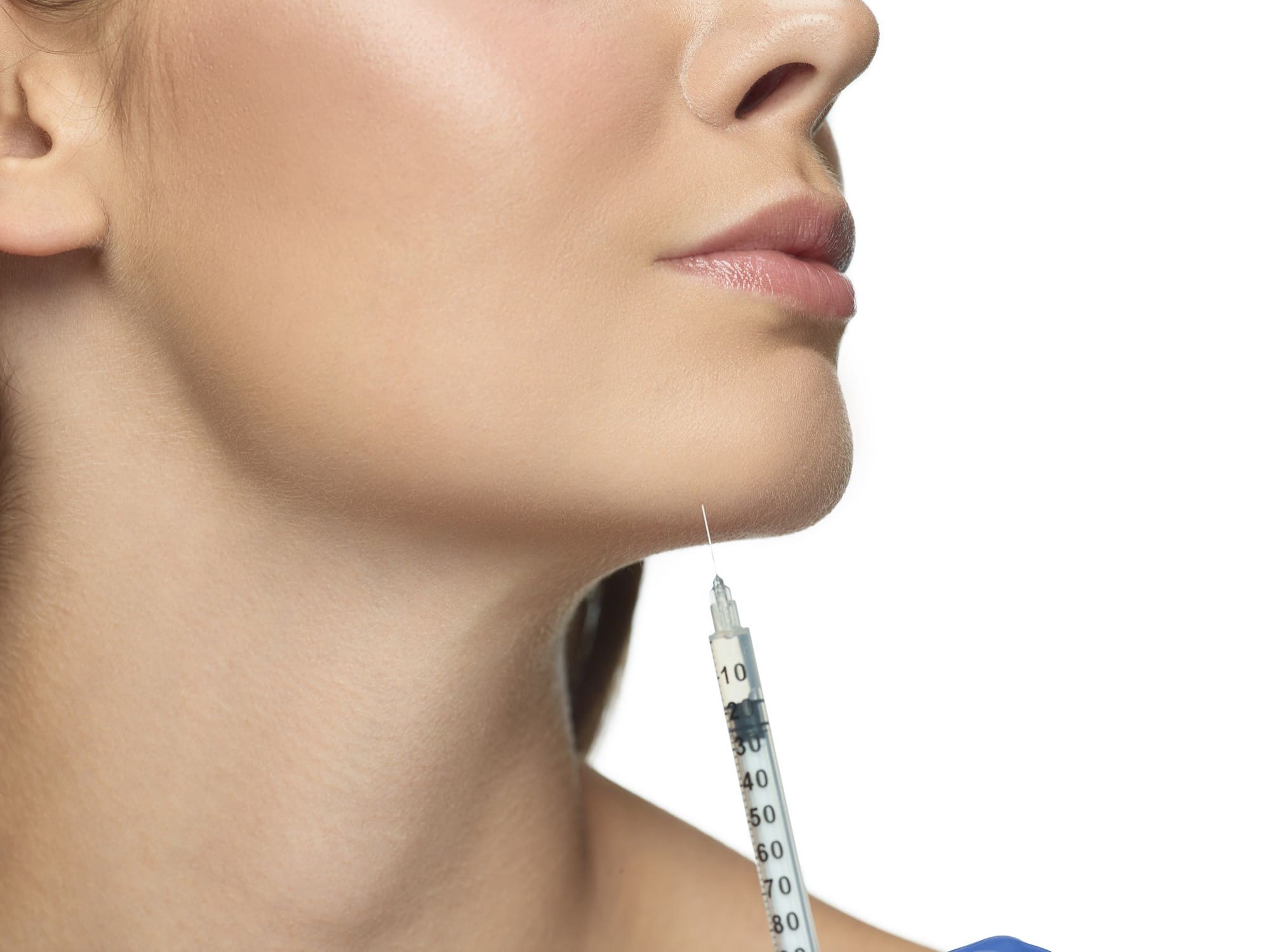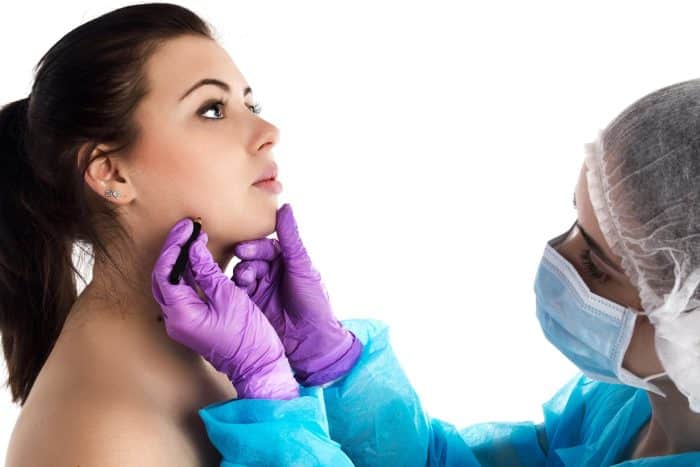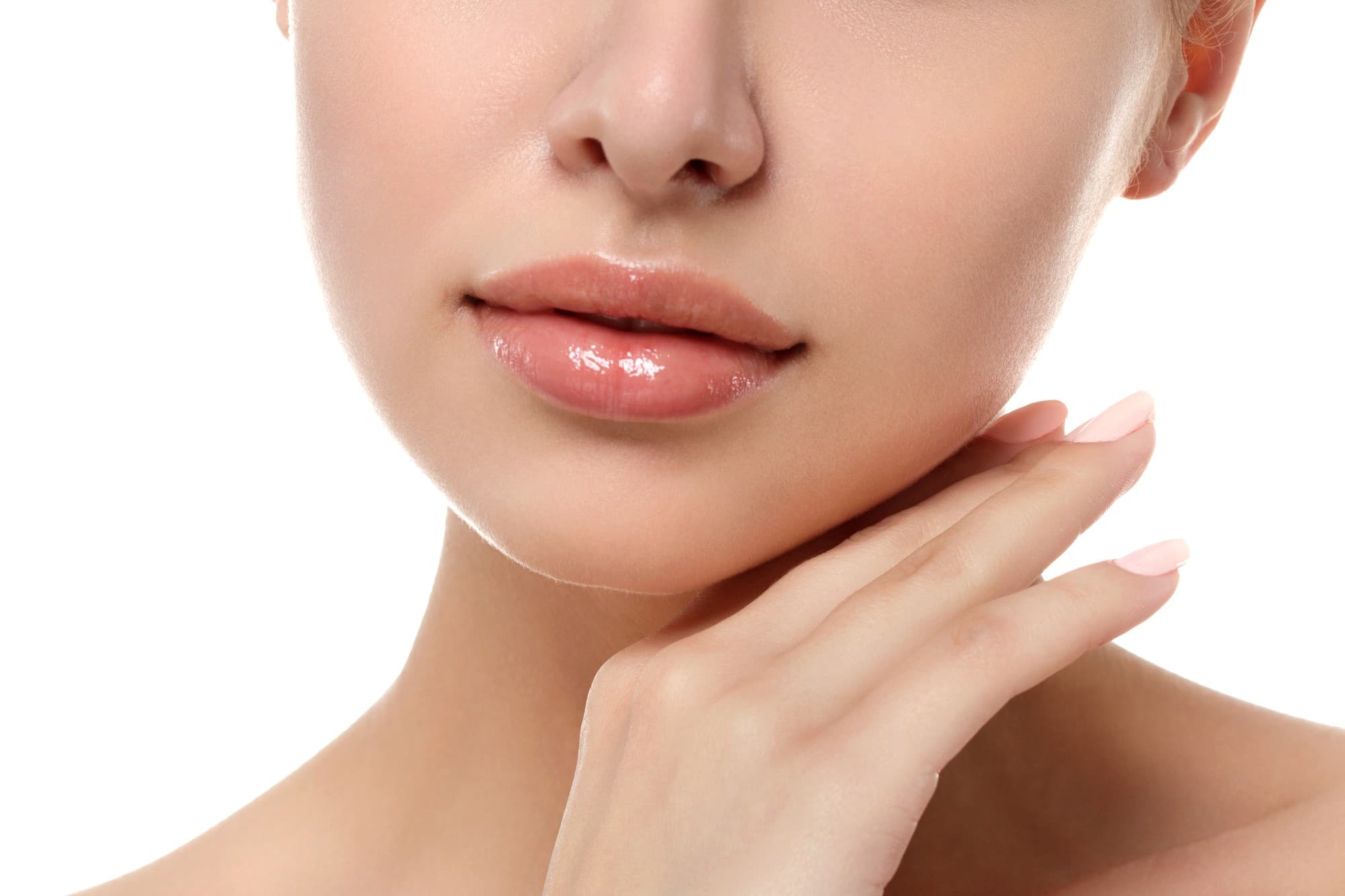
Over the years, chin enhancement procedures have become more popular. While surgery was once the standard, a clear shift towards minimally invasive methods is underway. In 2018, surgical procedures dipped by 5%, while nonsurgical treatments saw an impressive 228% increase. This surge highlights the growing desire for chin reshaping and contouring with minimal downtime and a quicker recovery.
Amidst this shift, Dysport emerges as a frontrunner. Like Botox, this neurotoxin offers a non-surgical solution for achieving a sculpted chin. Dysport can subtly refine the jawline by temporarily relaxing targeted muscles and creating a more aesthetically pleasing contour.
In this article, we’ll explore Dysport’s benefits for chin reshaping and contouring, how it works, and what to expect after the procedure.
Key Takeaways
- Dysport is a neurotoxin therapy that can be strategically injected into the chin area to relax specific muscles.
- Dysport’s effects deliver a softened appearance, dimpling reduction, and overall contour improvement when injected into the chin.
- Understanding Dysport’s mechanism of action and specific use in chin reshaping is crucial for achieving desired aesthetic outcomes.
- Dosage considerations and potential outcomes associated with Dysport chin treatments play a significant role in the overall treatment plan.
Understanding Dysport
Dysport is a brand name for the neurotoxin abobotulinumtoxinA. It works similarly to treatments like Botox or Xeomin injections. Healthcare professionals in aesthetic medicine use Dysport to address various concerns, including wrinkles and muscle-related conditions.
Mechanism of Action
Dysport works by targeting the neuromuscular junction, the point where nerve cells meet muscle cells. It binds to the nerve endings and blocks the release of acetylcholine, a neurotransmitter responsible for muscle contraction. This reduced muscle movement smooths out wrinkles and fine lines that appear when you make facial expressions.
The effects of Dysport are localized to the area of injection, and the onset of action typically occurs within a few days after treatment, with the peak effect seen at around two weeks. The duration of the effect varies but can last up to four months before the nerve endings regenerate and muscle activity returns to normal.
Specific Use in Chin Reshaping
In the context of chin reshaping, Dysport targets the mentalis muscle, which is responsible for the dimpling and wrinkling of the chin, often referred to as “pebble chin” or “orange peel chin.” Dysport can smooth out the chin’s texture and improve its appearance by relaxing this muscle.
Healthcare professionals must precisely administer Dysport injections for chin reshaping to avoid affecting nearby muscles, which could lead to asymmetry or difficulty with facial expressions. The practitioner also carefully determines the dosing and injection sites based on the patient’s anatomy and desired outcome.
However, patients must manage their expectations with this treatment. Though Dysport is a versatile neurotoxin that can offer aesthetic benefits such as chin reshaping, the results are temporary. Patients may have to attend repeated treatments to maintain their desired effect.
Chin Reshaping with Dysport

For those seeking a non-surgical approach to achieving a smoother, more defined chin line, Dysport injections offer a minimally invasive solution. Dysport can subtly refine the chin area by strategically targeting specific muscles, creating a more balanced and aesthetically pleasing look.
Targeted Muscle Relaxation
The key to chin reshaping with Dysport lies in relaxing a particular muscle: the mentalis muscle. This triangular-shaped muscle sits beneath the chin and plays a role in facial expressions like smiling and pouting. When the mentalis muscle contracts, it creates the dimpling effect often seen in the chin area.
Dysport injections temporarily block the nerve signals that tell the mentalis muscle to contract. With the muscle relaxed, the dimpling effect softens, leading to a smoother chin contour. This approach can be especially beneficial for individuals with:
- Naturally pointed chins with prominent dimpling
- Excessive chin dimpling caused by overactive muscle contractions
- Uneven chin lines due to asymmetrical muscle development
Strategic Injection Points
The strategic placement of Dysport injections is crucial for chin reshaping. Typically, Dysport is administered in one injection across five points, targeting specific muscles responsible for the undesired muscular activity.
This precise approach ensures that the relaxation of the muscles does not affect the natural movement of the rest of the face, maintaining an authentic expression while achieving the desired cosmetic outcome. Here’s a general overview of the specific injection points a practitioner can target when administering Dysport:
- Lower Chin: Injections are typically placed on the lower portion of the mentalis muscle, closer to the jawline. This strategic method relaxes the muscles and reduces the downward pull contributing to chin dimpling.
- Corners of the Mouth: In some cases, additional injections may be placed near the corners of the mouth to address any downward or marionette lines that contribute to a harsher chin appearance.
Dosage Considerations for Dysport Chin Treatments

While Dysport offers a minimally invasive approach to chin reshaping, determining the optimal dosage requires careful consideration of several factors. Unlike wrinkle treatments on the forehead or around the eyes, chin reshaping has a narrower target area and requires a more precise approach.
Recommended Dosage
There is no universally fixed dosage for Dysport in chin reshaping treatments. It can vary based on the individual’s muscle mass, the extent of the treated area, and the desired outcome. However, a common approach is to start with a conservative dose and adjust based on the patient’s response to the treatment.
For aesthetic purposes, such as smoothing a pebbled chin, doses may range from small units (e.g., 15 units) to higher amounts, depending on the severity of the dimpling and the strength of the mentalis muscle. It’s essential to consult with a healthcare provider as they can make precise assessments based on an individual’s facial anatomy, muscle activity, and desired outcomes.
Treatment Frequency
The effects of Dysport on chin reshaping are not permanent. As the body gradually breaks down the toxin, the mentalis muscle regains function, and the dimpling can return.
- Typical Duration of Results: Following the initial Dysport chin treatment, one can expect the results to last for 3-4 months. This timeframe can vary slightly depending on the patient’s metabolism and how quickly their body breaks down the Dysport.
- Repeat Treatments: Patients must attend follow-up treatments to maintain the desired chin smoothness. Most patients schedule touch-up appointments every 3-4 months, coinciding with the time when the effects of the previous treatment start to wear off.
- Gradual Dosage Adjustments: Over time, the dosage might need slight adjustments. As the body becomes accustomed to Dysport, a slight increase (within a safe range) might be necessary to maintain the same level of relaxation and achieve the desired results. However, a healthcare provider should make this decision during follow-up consultations.
Potential Outcomes of Dysport Chin Treatments

Dysport treatments for the chin area can lead to various aesthetic improvements. Here’s what patients might expect:
- Softened Appearance: Dysport works by relaxing the targeted facial muscles, which can result in a softened appearance of the skin. This improvement is particularly beneficial for areas with fine lines or wrinkles, as the relaxation of the muscles allows the skin to appear smoother and less creased.
- Reduction of Dimpling: One of the common concerns in the chin area is the presence of dimpling. The targeted relaxation of the mentalis muscle reduces the formation of dimples when smiling or pouting, leading to a smoother and more even chin contour.
- Improvement of Overall Contour: Beyond addressing specific issues like wrinkles and dimpling, Dysport can also contribute to the overall contour of the chin, jawline, and even the cheeks. This treatment can help redefine the lower face’s contours by injecting Dysport in the masseter or other relevant muscles, leading to a more harmonious and youthful appearance.
It’s essential to have realistic expectations and understand that results can vary based on individual factors such as skin type, muscle strength, and the extent of the treated area. Consulting with a qualified healthcare provider will help tailor the treatment to achieve the best possible outcomes.
Conclusion
Dysport offers a safe and effective way to achieve a smoother, more defined chin line without surgery. By understanding how Dysport works and the factors influencing treatment, patients and healthcare providers can collaborate to create a personalized plan that addresses specific concerns.
With Dysport, patients can achieve a more balanced and aesthetically pleasing chin contour, enhancing their overall facial harmony and confidence.
About: DoctorMedica is your trusted supplier of top-quality dermal fillers, viscosupplements, and more. We offer genuine products from leading brands at the lowest prices in the market. If you’re looking to buy Dysport wholesale for you practice, the sales representatives at Doctor Medica can give you guidance.
FAQs
1. What is Dysport?
Dysport is a neurotoxin therapy that can smooth lines and creases by temporarily blocking nerve signals to muscles.
2. Can Dysport be used for other areas besides the chin?
Aside from handling wrinklers, professionals can also use Dysport to treat conditions like cervical dystonia, muscle spasms, and stiffness in various body parts.
3. How long does it take for Dysport to show results?
Dysport typically begins to show results within 2-3 days after treatment, with the full effects becoming noticeable after about a week to two weeks.
4. Is Dysport safe to use?
Dysport has had FDA approval since 2009, making it safe for use in various therapeutic and aesthetic indications.
References
Cosmetic Surgery National Data Bank Statistics. Aesthetic Surgery Journal. 2018;38(suppl_3):1-24. doi:10.1093/asj/sjy132
Ramirez SPB, Scherz G, Smith H. Characteristics of Patients Seeking and Proceeding with Non-Surgical Facial Aesthetic Procedures. Clinical, Cosmetic and Investigational Dermatology. 2021;Volume 14:197-207. doi:10.2147/ccid.s296970
Deem M. Dysport: What You Need to Know. RealSelf.com. Published October 12, 2021. https://www.realself.com/nonsurgical/dysport
Related Articles
Joanna Carr
Lumigan vs Latisse – A Comparison of Two Bimatoprost Treatments
Compare Lumigan and Latisse, two treatments containing bimatoprost. Discover their uses, effectiveness, and side effects to make an informed decision ...
Joanna Carr
Cingal FDA Approval – Is the OA Treatment Safe?
While Cingal has common side effects like swelling or pain at the injection site, serious ones are rare. Read more on Doctor Medica.
Joanna Carr
When Does Nexplanon Start Working? – Timing and Effectiveness
Discover the timing and effectiveness of Nexplanon. Understand how quickly this birth control implant begins to work, factors that influence its effec...


